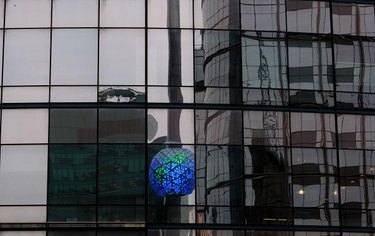
The term green office refers to a structure that is environmentally responsible and resource-efficient as defined by the U.S. Environmental Agency. Green offices are designed to be energy efficient and often incorporate recycled content. The goal is to create a healthy environment, conserve energy and reduce pollution.
History
Video of the Day
The concept of green office buildings took hold in the 1960s as part of the environmental movement. When the price of oil rose in the 1970s, the need for green office buildings became more prevalent. The development of more energy-efficient office buildings that could use renewable energy began.
Video of the Day
Components of Green Building
Green offices often position windows to take advantage of natural light. Green building practices include recycling coal products, foundry sand and demolition debris.
Indoor Air
Indoor air quality is another component of a green office. For example, builders can construct offices using radon-resistant techniques and install heating, ventilation and air-conditioning systems designed to maintain good air quality.
Fun Fact
One interesting drawback of green office buildings is the lack of noise associated with them. The same materials that make buildings environmentally friendly also make buildings less noisy. Leadership in Energy and Environmental Design, or LEED, buildings tend to be very quiet, almost too quiet for workers, says Kevin Powell of the U.S. government's General Services Administration. People in workplaces tend to like some background noise to give them a sense of privacy.